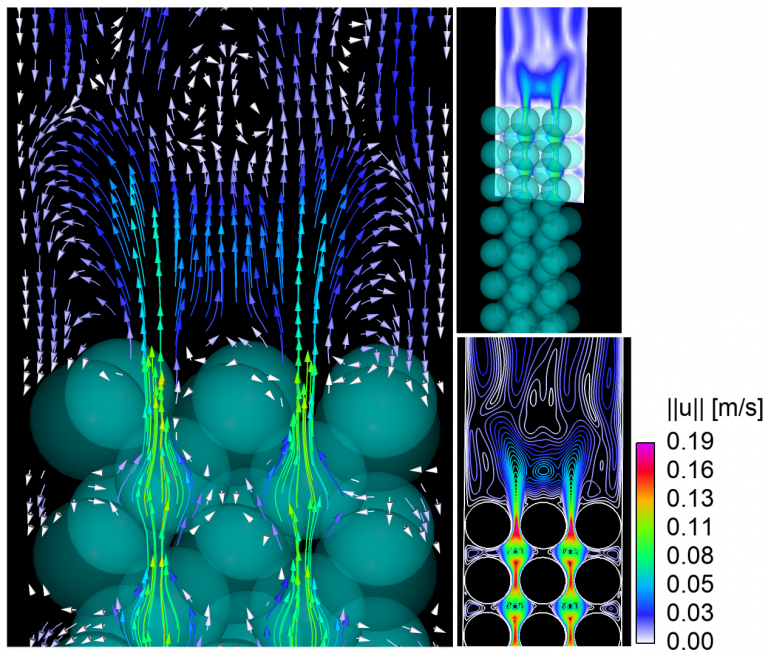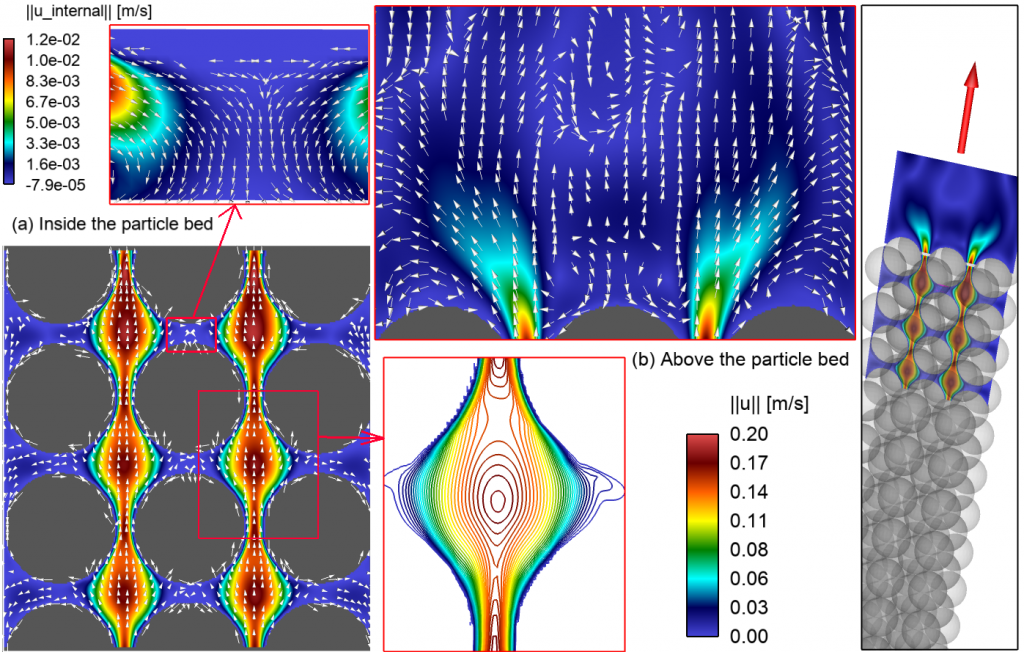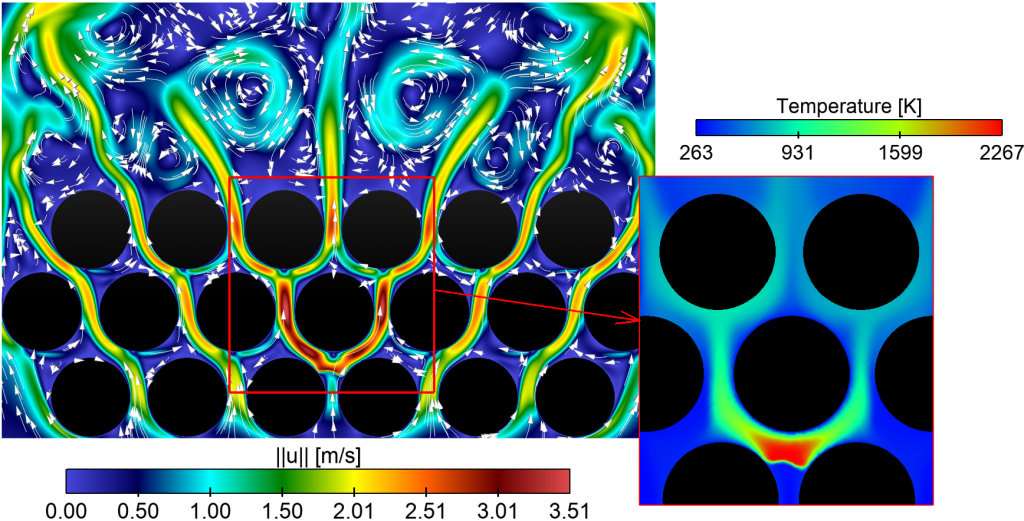A4
Lattice Boltzmann simulations of reacting flows in small-scale static and moving beds of particles with complex shapes

The central objective of this project is to improve our basic understanding of physico-chemical processes occurring at the micro-scale in particle beds including chemical reactions involving a gas phase. The gain in insight into this problem will provide fundamental guidance in the development of reduced models, suitable for simulations of the large-scale process. The shape and arrangement of particles in the bed control the resulting flow and, thereby, the final outcome of the chemical reactions. Boundary effects and dispersion processes are important concerning pressure drop as well as species and heat transport. All relevant aspects will be taken into account during this project for typical beds of small dimensions: complex, non-spherical particle shapes; particle movement; unsteady flow – from the laminar to the low-turbulence regime; detailed kinetics and species transport. For this purpose, a Lattice Boltzmann simulation model (LBM) will be developed and applied as a tool for Direct Numerical Simulation (DNS) of reacting flows in complex geometries.

Instantaneous velocity magnitudes obtained using ALBORZ illustrate the cold flow within the particle bed (left) and at the particle bed outlet (center). The particle bed is composed of spheres arranged in a body-centered cubic (BCC) geometry
The most important objectives for project A4 read:
- Using the existing experience in both groups, an LBM-based massively parallel and highly efficient open-source simulation software with excellent portability and scaling property on High-Performance Computers (HPC) shall be developed. A first version of the code for immobile particles will be released at the end of the first funding period as part of the “OpenPhase” project in Bochum (www.OpenPhase.de). Particle motion will be included in this publicly available software by the end of the second funding period.
- The interaction between particles and (laminar, transitional, or turbulent) reacting flows in wall-bounded as well as open beds shall be described with sufficient accuracy both for the case of static beds and for moving particles. In order to reach a high spatial resolution and at the same time cover a sufficiently large portion of the parameter space, the size of the simulation domain shall be kept small.
- The most important fluid and thermodynamic properties shall be identified by varying particle size, shape and distribution as well as the main parameters that influence chemical reaction and flow characteristics (process conditions, Reynolds number, bed arrangement, transport models).
- Based on these results, reduced models shall be derived and validated that can be used to describe processes involving chemical reactions in the inter-particle spaces within the bed. These reduced models shall then be ported to system simulations on a larger scale in project C7.

Results obtained with ALBORZ showing the stable position of a premixed flame interacting with isothermal cylinders in a two-dimensional configuration: velocity magnitude with an overlay of streamlines (left), temperature (right)



